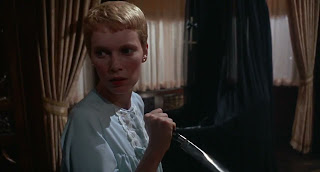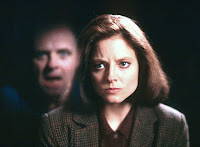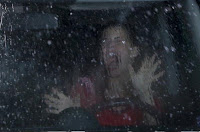 |
| Image via YouTube |
Well, if you’re going to remake a classic that didn’t need to be remade, then you might as well remake it like this.
“Evil Dead” pulls a Sean Parker and removes the “The.” While it would be funny if this was the only change made in this remake, “Evil Dead” defies a lot of expectations by actually being its own movie. Unlike the recent “Carrie” remake, “Evil Dead” knows exactly what kind of movie it wants to be: a spectacularly gory horror movie. At that, it definitely succeeds.
Once again, “Evil Dead” begins with a group of young adults heading up for a pleasant weekend in a cabin in the woods. At this point, you’d think that people would watch enough horror movies to know that you’re probably screwed if you go to stay in a cabin in the woods.* Even if reminders of “The Evil Dead” past abound, including the car, a deck of cards, and that ticking clock, this new group has no clue what they’re in for.
You could sit there and try and figure out which character is supposed to be in the place of which character from the original, or you could look at them as separate people. The characters in “Evil Dead” are definitely more fully fleshed out than in the original, even though their paper-thin nature is what made the characters originally so funny. The most important characters here are David (Shiloh Fernandez) and his sister Mia (Jane Levy). Their mother had died, David wasn’t there for them, and Mia tries to get off drugs once and for all.
While the original almost immediately jumps into demon play, “Evil Dead” takes its sweet time, which allows for some solid buildup. During this time, we learn that Olivia (Jessica Lucas) is a nurse who is somewhat helpful to Mia, even though she doesn’t realize that her possession isn’t actually withdrawl. Meanwhile, Eric (Lou Taylor Pucci) finds the infamous Sumerian text and begins to piece together what is really going on. You see, Eric is smart, and we know this because he has long hair, a beard, and glasses. Meanwhile, we learn that Natalie (Elizabeth Blackmore) is an attractive blonde who is in this movie because she is an attractive blonde. At least Fede Alvarez gives his caricatures decent backstories.
These cabin dwellers are certainly a little less oblivious than the first bunch, or at least they are the victims of some plausible misdirection. Also, the demons themselves are a little different this time around. It seems to be more clear where they come from, and they are also much more personal in their taunting. This comes back to how well developed the characters are at the beginning. Yet David, like Ash, doesn’t have much more of a comeback beyond “Shut up!”
Once everyone figures out what exactly is going on, “Evil Dead” is relentless. It relishes it buckets of blood and shocking violence. I don’t use the word “shocking” lightly because that is something that is nearly impossible to do nowadays. “Evil Dead” shows everything from discarded flesh to mutilated arms. Normally, this would be just too much and if this already sounds like too much for you, then you definitely should not watch “Evil Dead.” Yet, “Evil Dead” earns the right to show too much, as the film tries to replicate the experience of hell literally breaking loose on earth.
“Evil Dead” also highlights how well the original film holds up today, despite many sequels, knockoffs, and raised stakes in gore and torture porn. There’s still nothing as perplexing and weird as a tree coming to life and committing rape. That scene is handled quite differently in the remake, as if here it is actually trying to give itself a purpose for existing. Maybe it just really felt the need to be in the remake, given how infamous that scene is. The great thing about “Evil Dead” is that you don’t need to be a fan of the original trilogy in order to enjoy it. Yet, those who are will find themselves rewarded. “Evil Dead” was produced by Sam Raimi and Bruce Campbell, who clearly knew which scenes fans were dying to get recreated.
“Evil Dead” might be even more bloody disgusting than the original, but its also surprisingly more hopeful. “Evil Dead” is as much a redemption story as it is a horror film. Independent from the original, it is a high quality horror film, mining screams from the utmost depths of unimaginable fright. It is just as scary to see an arm pop out of the ground and scare someone as it is to see someone saw off their own arm in order to save themselves. These are two things that happen in “Evil Dead,” many times over.
Unfortunately, “Evil Dead” loses a few valuable traits in its translation from 1981 to 2013. It lacks the visceral sense of humor of “The Evil Dead” as well as its audacity and simplicity. The original felt like commentary on all of horror in general. Through a bleeding projector and some off-putting point of view shots, the film transported the viewer right into it and then asked if they still enjoyed watching a horror film as it tore itself apart from the inside. The new one is a bit more of a back-to-basics horror film, often asking the audience to just sit back and be scared. That is not necessarily a bad thing, because “Evil Dead” delivers damn well on that promise. Still, it sometimes feels like “Evil Dead” homogenizes a revolutionary cult classic.
Nonetheless, “Evil Dead” is a fine practice in plausible insanity. Despite a lack in laughs, it never takes itself too seriously. “Evil Dead” is a sometimes fun, sometimes scary, practice in developing a bunch of characters, and then trying to find ways to kill them all off.
*Come on, guys. This is why Cancun was invented!
 |
| IT’S JUST LIKE “THE HAPPENING” LULZ. Image via Bitch Magazine |









